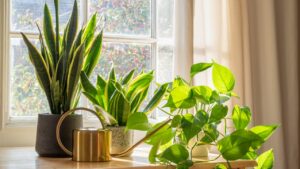After several days of heavy rain in the City of Buenos Aires and its surroundings, it is no surprise that humidity begins to accumulate in homes, causing visible discomfort such as stains, bad odors, and a constant feeling of cold. But beyond the aesthetic aspect, humidity can have serious consequences for health, especially in people with asthma, allergies, or respiratory diseases.
This is because excess humidity favors the appearance of fungi, mold, and mites, organisms that easily develop on damp walls, ceilings, and textiles. These agents can cause anything from eye irritation and nasal congestion to severe respiratory conditions, especially in children and the elderly.
For this reason, it is important to take action to reduce humidity at home. It is recommended to ventilate all rooms daily, even on cold days. One of the most well-known remedies is the use of coarse salt, which acts as a powerful moisture absorber in open spaces, or baking soda, which is ideal for enclosed spaces like drawers, closets, or small bathrooms.
White vinegar is another natural ally. Mixed with water, it is useful for cleaning surfaces affected by humidity or mold, eliminating fungi and disinfecting without harming the environment. Activated charcoal can also be used, as it absorbs both moisture and bad odors, being useful in basements or poorly ventilated rooms.

Plants against humidity: green allies for your home
In addition to the methods mentioned above, plants that absorb moisture can also be added. In this context, some indoor plants become key allies for this task, as they not only decorate but also absorb environmental moisture and prevent the appearance of mold and fungi.
Among the most effective are the bamboo palm, ideal for humid spaces like bathrooms or kitchens. Its ability to absorb water from the air makes it an excellent choice to maintain a balanced environment. Also noteworthy is the fern, which besides being very decorative, acts as a natural humidity regulator.
Another recommended plant is the English ivy, which filters toxins and helps dry the air. It adapts easily to indoor spaces and is effective in poorly ventilated rooms. On the other hand, the snake plant is not only resistant and easy to care for, but it also absorbs excess moisture and purifies the air.
Green allies against mold and stale air
The calathea and the peace lily are also part of the team of plants that help improve home health. These species absorb water from the environment and prevent the formation of mold spores, especially in rainy seasons or areas with poor ventilation.
Using plants is a sustainable, cost-effective, and aesthetic way to combat the effects of excess humidity indoors. Additionally, they improve mood, reduce stress, and provide freshness to the environment.

Humidity also makes you sick
According to specialists, living with constant humidity can increase the risk of respiratory infections, bronchitis, and skin diseases. Prevention is key: keeping environments dry and clean is essential to protect the health of the whole family.
If black stains or mold are detected on walls, it is advisable to clean them with a solution of water and bleach, always using gloves and a mask. If the problem persists, it is recommended to consult a professional to assess structural damage or the need for waterproofing.
Fighting humidity not only improves indoor air quality, but also prevents diseases and avoids costly future repairs. After rainy days, taking simple measures can make a big difference.

